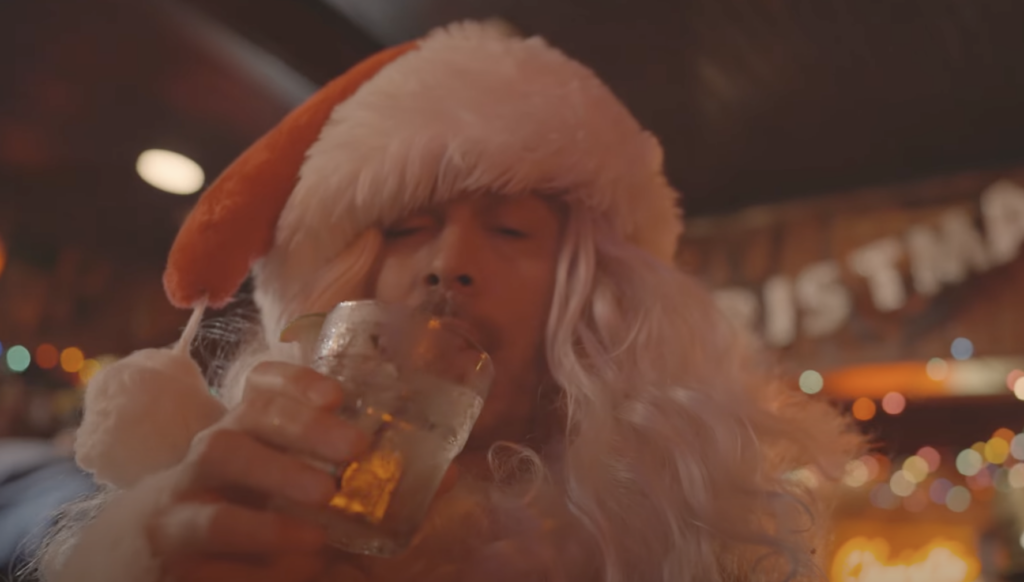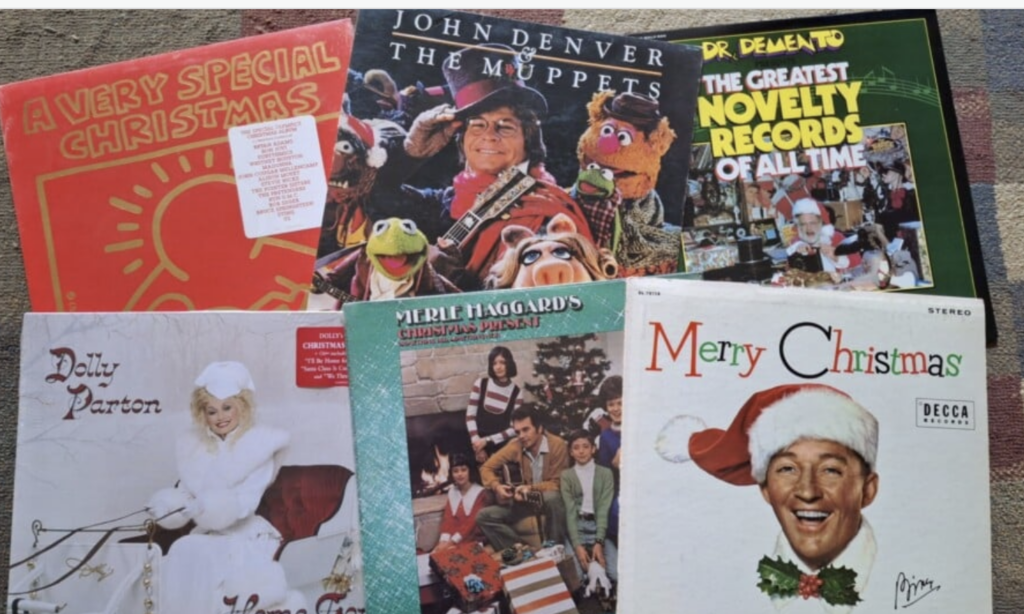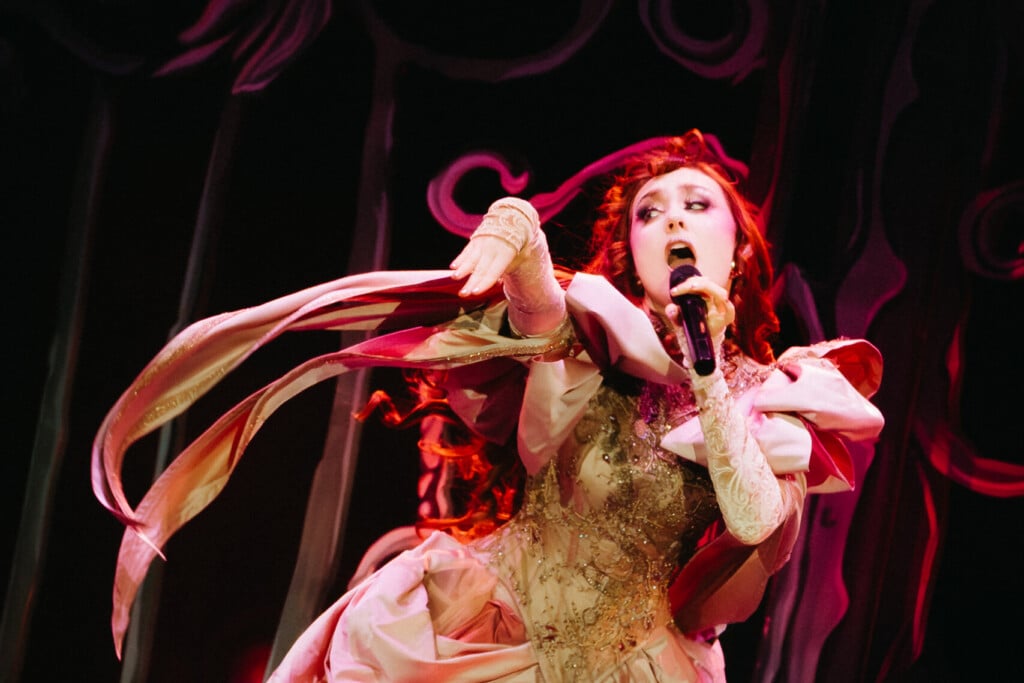Talking Heads’ Jerry Harrison brings Stop Making Sense to the Kauffman
Talking Heads’ Jonathan Demme-directed concert film, Stop Making Sense, is variously described as legendary and classic, frequently referred to as one of the best concert films of all time. It exists in the pantheon of the Band’s The Last Waltz or Pink Floyd: Live at Pompeii as something that is more than just a document of a live performance, but artistry in movement and sound
For its 40th anniversary in 2024, Stop Making Sense received a gorgeous 4K remaster from A24 and, in addition to a theatrical re-release, Talking Heads’ keyboardist/guitarist Jerry Harrison has been screening the film on a national tour, wherein he does a question and answer session afterward. Ahead of the tour stop at the Kauffman Center on Saturday, Nov. 1, we spoke with Jerry Harrison to discuss the legacy of Stop Making Sense and Talking Heads.
 The Pitch: You’re doing Q&As after these screenings. What’s the most oddball question you’ve heard thus far as you tour this movie?
The Pitch: You’re doing Q&As after these screenings. What’s the most oddball question you’ve heard thus far as you tour this movie?
Jerry Harrison: I just got asked that, and I can’t remember. There have been some oddball ones, but I haven’t been taking the time to write ’em down. I’ve done quite a few of these, so they start to blend, but I have to say that it really varies. Sometimes it’s like a whole series of really, really interesting questions and you go, “God, that was really a fun night,” and then there are other times where it’s a little bit lackluster.
There are a lot of times where people will give a testimonial of how much the Talking Heads has meant for them and it’s very sweet. And of course, I appreciate that, but I don’t think that’s particularly interesting for the rest of the audience.
Ah, yes—the ever popular “this is more of a comment than a question.” I think Stop Making Sense has really lasted so long because of the way it’s constructed. It is a show that literally builds on stage. When you’re watching this movie, what challenges do you remember as part of putting on this very layered performance?
Some of it was for our road crew. The risers included all of our amplifiers. It included all of the monitors. It included electricity for little light if you needed it, so each one of them had an umbilical cord that went back to the mixing board, as well as to the electricity, and to the monitor board and everything, and those connections could become loose or someone could run over one of them or something like that.
The risers were built in a barn by one of our roadies. His family, I think, had some experience as carpenters, but they were built with angle iron and plywood. They weren’t fabricated in some sort of high-tech machine shop and they could start to get rickety and have to be repaired. It feels sort of like a 1930’s theater production almost.
The other thing is that we are not using in the ear monitors. Our monitoring is in those risers, and that meant that we had to be very, very on top of stage volume and things like that, so the mics didn’t feed back.
In the movie, you see the crowd dancing the entire way through. You all are dancing the entire way through. I have seen screenings of this film where they turn into dance parties. Does that happen with this tour as well?
Yes. I mean, it depends, of course, on the physical theater and the makeup of the audience. It’s always a mixture of people that grew up with Talking Heads who are a little bit more likely to stay seated for most of it. Usually, if there are people dancing, certain songs will get them up and dance. Younger audiences have a tendency to dance the entire time a little more.
There are places where it’s a theater that has invested in a really great surround sound system and it’s a little bit more about watching the new higher definition video and the higher definition audio. Other ones, where they have a PA—like a band playing—it’s much more suggestive of dancing in the aisles. I almost feel like that you should see this film in IMAX and then go someplace where you’re dancing to it and experience it both ways.
Speaking of the restoration and the new Atmos mix, what was the timeline putting this together? I can’t imagine it was a short job.
No, it was a good part of a year during the mix—not that we worked every day, me and my engineer Eric Thorngren. The two of us had been involved in the mixing of the 1999 release that was [Dolby] 5.1. We were able to get a transfer, start doing the placement, and start working in a small studio that does Atmos that a friend of mine runs.
But the sync wasn’t perfect and, in fact, it didn’t happen until James Mockoski, who was doing the visuals, got in touch with the MGM warehouse and we were like, “MGM? What does MGM have to do with this film?” But we found the final piece of the puzzle there, and it wasn’t until a few weeks before the end. So, even though we had been working on it for a very long time, it was still a scramble at the end.
What is your preferred release of Stop Making Sense?
Well, there is a Blu-Ray version which has those three songs [“Cities” and “Big Business / I Zimbra”] in it that you can watch. In fact, there’s two ways to watch it because we could not find the original negative to clean up what Jonathan had edited for those three songs. I think the negative got sent to Japan to make a laserdisc, and we just could not track down where it went, so there’s a version that uses the other cameras that were available that we could clean the negative and re-scan them at the same level.
You can watch it with Jonathan’s edit, but it’s not as high-def, and then you can also watch it this other way, which is another editor. It’s a little discontinuous there. I think that the classic one that we’re gonna see in the theaters fits what everyone kind of says is the right length for a film, very close to an hour and a half.
That being said, as a lover of the film, the versions of “Big Business” and “Zimbra” and “Cities” are fabulous and so I think, if you love the film, you kind of wanna watch it both ways.
Stop Making Sense contains what is, for me, the best version of “Once in a Lifetime”. That version from the film is just absolutely wonderful. How did you approach reconfiguring these songs for the film versus how you might have normally played them in concert or how they were recorded originally?
Well, we didn’t change anything, particularly, for the film. This was the show we were doing for the entire summer into the fall, exactly, with everybody playing largely the same. I mean, there’s a few moments where you might, if you’re sort of in a moment of a solo, that you would change what you’re doing, but things were pretty consistent. With many people on stage, people had to be quite disciplined to step out or stop playing for a second if something else needed to come forward.
I think that one of the great things—and people have brought this up in the Q&A or other interviews—is that you still hear spaces, you still hear holes. There are moments when you hear things popping through, and that’s by design and it shows the professionalism and the level of discipline. Everyone in the band is not just trying to self-express and push what they’re doing so it becomes this cacophony of nine people doing everything they can all the time.
How did you feel when you heard Weird Al’s “Dog Eat Dog”?
Well, I think I preferred the Fred Armisen parody. There was also one a band called The Fools in Ipswich, Massachusetts did very early on, “Psycho Chicken”. I think it’s the ultimate compliment to be parodied, so I think I felt great about it, but I think the Fred Armisen one [“Final Transmission,” from Documentary Now!]—of course, it’s visual, too—is really amusing because you are looking at people trying to emulate David or me or Chris or Tina.
As you’ve toured Stop Making Sense or in spending a year on the restoration, do you feel like you’ve seen every possible detail in the film?
No. Every time I watch it, I’ll see something like a glance or some really quick communication between musicians that I might’ve missed earlier. I do think it’s a film that you can watch over and over again and notice other things, and the fact that you can sometimes be watching it and be dancing at the same time means that you’re taking your eyes off the screen and bringing ’em back.
Obviously, when we saw in IMAX, you saw things with a level of detail that maybe you could see things that you had never seen before. So, it remains pretty fresh.
Do you have a favorite detail you’ve noticed over the many, many viewings?
Well, my favorite shot is the one where Lynn [Mabry] and Ednah [Holt] are leaning back and they’re sort of uplighting on Bernie and me, where it reminds me of a horror film—sort of up from The Crypt—and I think that remains my favorite shot.
What memories do you have of performing in Kansas City over the years?
They’re pretty vague, I have to say. I don’t remember the name of the place we played. I’m always aware of how interesting Kansas City—both how interesting that jazz has its own scene and its own culinary scene. It was an outpost of artistic expression. I also remember going to Lawrence, Kansas, which I always found really great.
I think the last time I was there was before I produced the band Billy Goat, and they were performing there and of course everyone is always talking about that William Burroughs lived there. I’m from Wisconsin and so, the idea that there’s these outposts of culture across the Midwest is often missed on people who live on either coast. I’m acutely aware that that exists.
Jerry Harrison brings Stop Making Sense to the Kauffman Center for the Performing Arts on Saturday, Nov. 1. Details on that show here.







